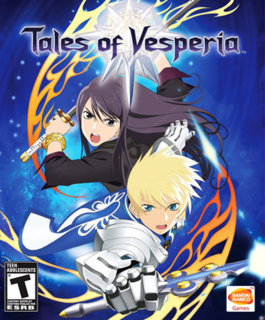amazing
It helps that the dialogue, while not without occasional clumsiness, is translated rather well and gives each party member clear motivation and personality. Quiet moments between Estelle and Yuri are heartfelt, while the banter between Raven and his traveling companions is amusing and generally unforced. The script's best bits come courtesy of the game's skits, in which the characters, represented onscreen by talking-head portraits, interact, complain, and otherwise comment on recent events. Newcomers to the series may find the skits visually jarring, given that the basic 2D images don't mesh well with the lush backgrounds and cel-shaded character models. Nevertheless, the skits are a series staple and deliver plenty of character motivation, humor, and story tidbits. And because you have to press the back button to view them, you don't need to watch them if you don't want to.
As you traverse the lands of Terca Lumireis, you'll find no shortage of eye candy to gaze at. Tales of Vesperia's art style is its most striking feature, and at first you may be inclined to compare it to 2007's luscious Eternal Sonata. There are similarities, but Tales takes a less fussy, more muted approach. Environments look vibrant but clean, though that doesn't mean they lack detail. You'll explore countryside villages, a derelict ghost ship, and a tall clockwork tower, among many other locales, and each is visually interesting while remaining consistent with the overall look. The game makes good use of soft lighting and understated cel-shading, and character models are crisp and animated well. Not to be outdone, the musical score uses a variety of moody harp tunes and rousing electronic themes that complement the visuals. The English voice acting, often a source of worry among RPG fans, is pretty good, though the overzealous female voice artists do grate from time to time.

